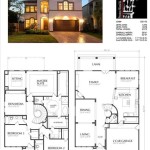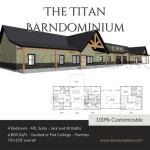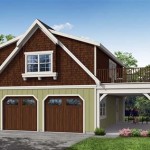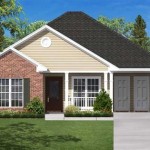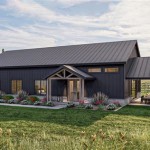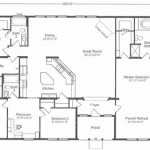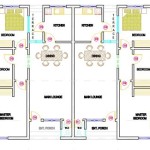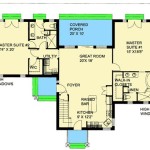House Plans for Hillside Homes
Homes built on hillsides offer captivating views and unique architectural style, but they also come with their own set of challenges. Designing a house on a sloped lot requires careful planning and attention to detail to ensure both functional and aesthetically pleasing living spaces. Here are some considerations and tips for creating exceptional house plans for hillside homes:
Site Evaluation and Lot Grading
Thoroughly evaluate the building site and consult with an experienced engineer or architect to determine the optimal location and orientation of the house. Grading and excavation will be crucial to level the site and create stable foundations. Proper drainage systems should be implemented to prevent water accumulation and soil erosion.
Optimal Floor Plan Design
The sloping terrain often dictates unconventional floor plans. Consider split-level or terraced designs that adapt to the natural contours of the hillside. Open floor plans with fewer walls can maximize the flow of space and create a sense of spaciousness. Incorporate features like built-in shelving and stairs with storage to optimize vertical space.
Natural Light and Ventilation
Harness the available natural light and ventilation by placing windows and doors strategically. Floor-to-ceiling windows can provide panoramic views while reducing the need for artificial lighting. Design overhangs or use light diffusing materials to control sunlight and prevent overheating. Proper ventilation systems should be incorporated to ensure air circulation and maintain a comfortable indoor environment.
Outdoor Living Spaces
Take advantage of the hillside's natural elevation to create outdoor living spaces with breathtaking views. Design patios, decks, or balconies that extend the living area outdoors and offer seamless transitions between indoor and outdoor spaces. Consider built-in amenities like fireplaces, grilling areas, and water features to enhance outdoor enjoyment.
Structural Considerations
Engineering is critical for hillside homes to withstand the forces exerted by the slopes. Choose durable building materials that can withstand moisture, movement, and potential seismic activity. Use retaining walls, reinforced concrete structures, and advanced foundation systems to ensure stability and minimize erosion.
Accessibility and Circulation
Consider accessibility when designing the house. Plan for accessible paths, ramps, or elevators to ensure easy movement throughout different levels. Provide designated parking areas and consider the impact on pedestrian and vehicular circulation.
Landscaping and Hardscaping
Landscaping and hardscaping play a crucial role in enhancing the beauty and functionality of hillside homes. Utilize drought-tolerant plants and native species that require minimal maintenance. Retaining walls, terraces, and pathways can be used to create visually appealing and erosion-resistant landscapes. Consider incorporating water features to blend seamlessly with the natural surroundings.
Conclusion
Designing house plans for hillside homes requires a combination of creativity, technical expertise, and an understanding of the unique challenges and opportunities presented by sloped lots. By following these considerations and seeking professional guidance, you can create exceptional living spaces that embrace the natural beauty and topography of the hillside.

Plan 51697 Traditional Hillside Home With 1736 Sq Ft 3 Be

Hillside And Sloped Lot House Plans

Hillside House Plans With Garages Underneath Houseplans Blog Com

Hillside House Plan Modern Daylight Home Design With Basement

The Architect Split Level House Built On Steep Slope Description From Kathabuzz Co Into Hillside Architecture Unique Plans

Hillside House Plan Modern Daylight Home Design With Basement

Hillside House Plans Home Floor And Designs

A Guide To Sloping Lot House Plans

Hillside Plans For A 3 Bedroom Vacation Or Year Round Home

House Plans For A Sloped Lot Dfd Blog

